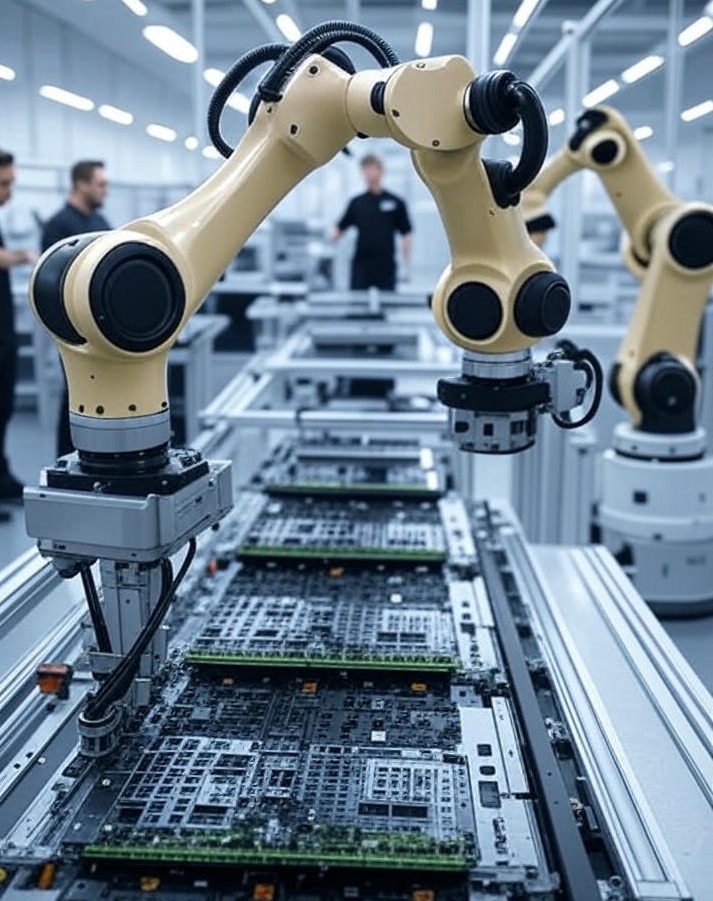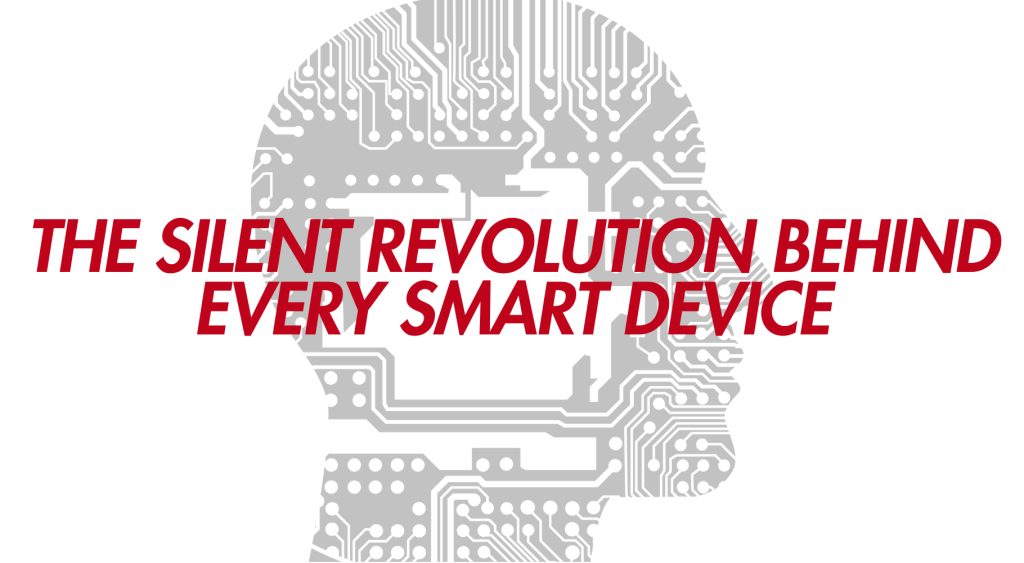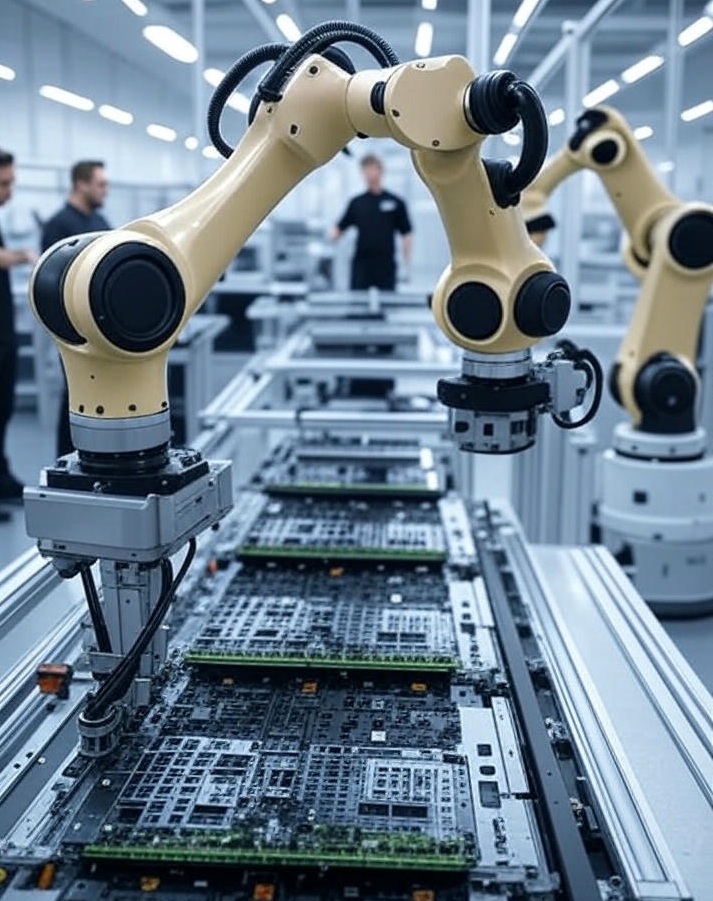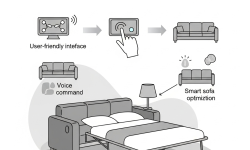

Have you ever wondered how your smartphone is made? Or how smart TVs, laptops, and game consoles are pumped out by the millions and still manage to work perfectly right out of the box?
Well, it’s not magic. It’s machines. Really smart ones.
We’re living in a time where Artificial Intelligence (AI) and Robotics are not just futuristic buzzwords anymore. They’re real. They’re working behind the scenes in ways you’d never imagine — especially in electronics manufacturing.
And today, we’re diving into this world together.
Grab a coffee. Let’s explore how AI and robots are changing the game — and how it might affect you, even if you’re not in the tech industry.
What’s Going On Behind Factory Doors?
You might picture a factory filled with people in uniforms, assembling chips, screens, and circuit boards by hand. But things have changed — and are still changing fast.
Now, imagine robotic arms moving with laser precision, conveyor belts adjusting themselves automatically, and software predicting exactly how many parts are needed before anyone even asks.
That’s the power of AI and robotics. And electronics manufacturing? It’s the perfect playground for it.
Why Electronics Needs a Makeover
Let’s be honest. Electronics manufacturing is no joke.
It’s one of the most complex industries out there. Just think about what goes into making a smartphone:
- Tiny chips with millions of circuits.
- Batteries that must last all day.
- Screens that are smooth, scratch-resistant, and responsive.
- Cameras that act smarter than your average DSLR.
Each component has to be built with extreme accuracy. A tiny error can ruin an entire product. That’s why companies are turning to machines that don’t make mistakes — or at least, make far fewer than humans do.
Enter AI: The Brain Behind the Operation
AI is not just about talking assistants or self-driving cars. In the factory world, it acts like the brain of the operation.
Here’s what it does:

1. Predicts Problems Before They Happen
Have you ever broken a device just days after the warranty expired? Annoying, right?
Well, AI can analyze data from thousands of devices and predict when parts might fail — even before they do. Manufacturers can then fix or improve the process in real-time.
So, you get better products, happier customers, and a whole lot less waste.
2. Learns and Improves On Its Own
Old-school machines follow rules. Do this, then do that.
But AI systems? They learn from patterns. They watch what works, what doesn’t, and tweak their performance automatically.
So, over time, the machines get better. Smarter. Faster.
And that’s good news for everyone — from factory workers to the person unboxing a new laptop.
What About Robotics? Are They Taking Over?
Now, let’s talk about robots.
These are the hands to AI’s brain. They do the physical work — lifting, welding, placing, assembling, testing.
But don’t imagine a clunky Terminator-looking thing. Modern robots in electronics factories are sleek, compact, and incredibly fast.
Some can assemble hundreds of circuit boards per hour without breaking a sweat. Others can detect a tiny error — thinner than a strand of hair — and fix it instantly.
Cool, right?
Can Robots Really Replace Humans?
Here’s a question you might be thinking: Are robots taking away jobs?
It’s a fair concern. And the short answer is: not entirely.
Yes, some repetitive tasks are being automated. But here’s what’s also happening:
- New jobs are being created to manage and maintain these machines.
- Workers are being trained in robotics, AI systems, and smart manufacturing tools.
- Humans are still needed for creativity, design, strategy, and supervision.
So, while jobs are changing, they’re not disappearing. They’re evolving.
And honestly, would you rather spend hours soldering wires — or work on programming a robot to do that for you?
Real-World Examples: It’s Already Happening
Let’s step out of theory and look at how some big names are already using AI and robotics in their electronics factories:
Apple
Apple uses advanced AI algorithms to check each iPhone’s quality on the assembly line. Robots help place components with mind-blowing accuracy.
Foxconn
This major manufacturer — the one that builds phones for Apple and other brands — has thousands of robots on its production floor. They call them “Foxbots.” These bots handle everything from polishing phones to assembling screens.
Samsung
Samsung’s putting AI to work behind the scenes to make its chips smarter and production smoother. AI spots design flaws, predicts overheating issues, and helps reduce power usage — all before the product is even built.
How Does This Benefit You?
Even if you’re not in the electronics industry, you’re still affected by these changes.
Here’s how:
- Faster production: New gadgets get released on time.
- Better quality: Fewer recalls or device malfunctions.
- Lower costs: Efficient factories mean cheaper products in your hand.
- Sustainability: Smarter production = less waste, less energy use.
So, next time your phone lasts longer or your TV looks sharper — thank a robot (and the AI running it).
Smart Factories: The New Buzz
Let’s talk about a fun term: Smart Factories.
This is where AI, robotics, the Internet of Things (IoT), and cloud computing all come together. It’s like giving a factory a brain, a nervous system, and even a voice.
- Machines talk to each other.
- Data flows in real-time.
- Production lines adjust automatically when demand shifts.
You don’t need 100 people checking quality. The system does it by itself.
And that’s not science fiction. It’s already happening in places like Japan, South Korea, and increasingly — India.
India’s Role in the AI + Robotics Revolution
India isn’t sitting on the sidelines anymore. It’s getting into the game in a big way.
With its strong IT talent, booming startup scene, and government focus on “Make in India,” the country is building next-gen electronics facilities.
- Tata and Vedanta are investing in chip plants.
- Robotics startups are popping up in Bengaluru and Pune.
- Indian firms are exploring AI-driven predictive maintenance and automated testing in their plants.
This is just the beginning.
If you’re a student or tech enthusiast in India — the field is wide open for you.
Are There Challenges? Of Course.
Every revolution comes with a few bumps. And this one’s no different.
Here are some real issues the industry is facing:
1. High Initial Costs
Installing robots and AI systems isn’t cheap. Smaller companies might struggle to adopt them quickly.
2. Skill Gaps
AI and robotics need trained hands. There’s a shortage of people who understand both tech and factory operations.
3. Data Privacy & Security
AI runs on data. Tons of it. Keeping that data safe is a top concern — especially in competitive markets.
But the good news? These challenges are being tackled head-on with training programs, government support, and smarter security systems.
What Does the Future Look Like?
Let’s fast-forward a few years.
- AI will not just suggest fixes — it’ll run entire production lines solo.
- Robots don’t need sleep or vacations — they’ll keep working around the clock without missing a beat.Smart glasses and AR tools will guide technicians in real time.
- Factories will become so automated that they might run in the dark — literally. (It’s called a “lights-out factory.” Yes, it’s a thing.)
And the pace of innovation? It’s only getting faster.
What Should You Do With All This Info?
Glad you asked.
Depending on where you stand, here’s what this revolution means for you:
If you’re a business owner:
Start exploring how automation can cut costs, improve quality, and speed up your time-to-market.
If you’re a student or professional:
Upskill. Learn about AI, robotics, automation tools, or programming. These fields are future-proof.
If you’re a policymaker or industry leader:
Push for tech parks, AI-focused education, and innovation grants. India can lead — but it needs support.
If you’re a curious tech lover:
Stay informed. Maybe start a blog. Get curious — explore smart factories, check out tech expos, and stay in the loop with what’s trending.
Who knows? One click, one visit, one insight — and you could be on to your next big thing.
Final Thoughts: It’s Just the Beginning
AI and robotics teaming up is completely changing the way electronics come to life.
From smarter assembly lines to self-learning quality checks, this tech duo is building a faster, more reliable, and sustainable future.
And you? You’re right in the middle of it.
Whether you’re buying a new gadget, working in tech, or just exploring what’s next — keep your eyes open.
Because the factories of the future aren’t filled with smoke and noise. They’re filled with code, sensors, and machines that learn.
And guess what?
This future isn’t ten years away.
It’s already here.








